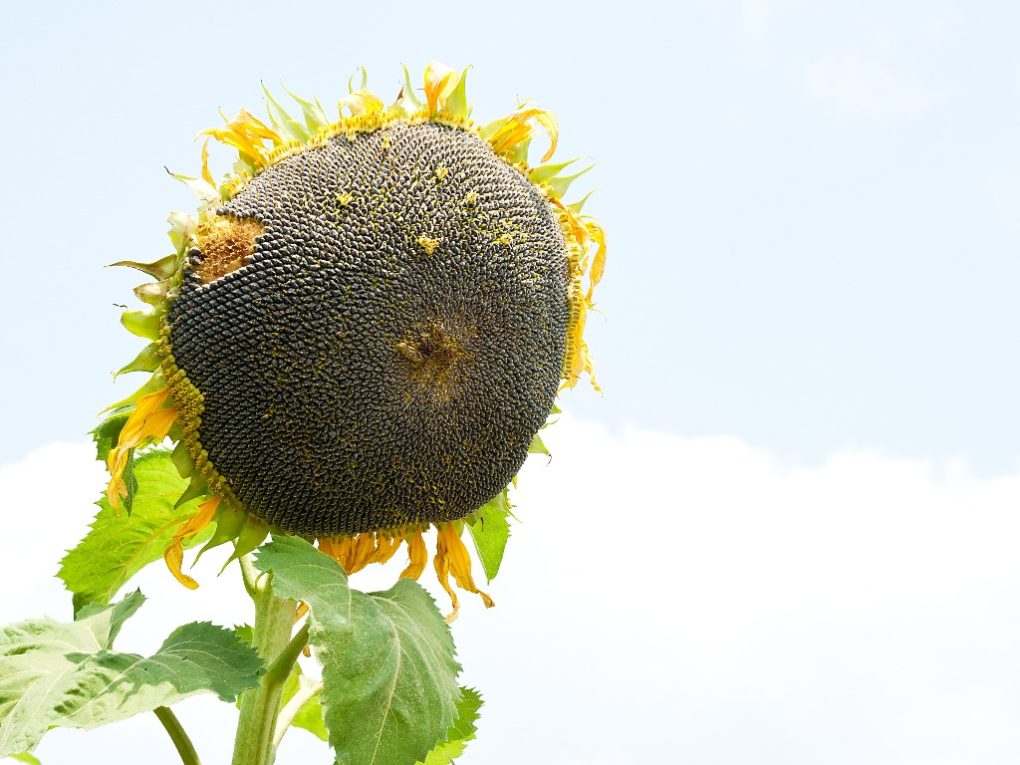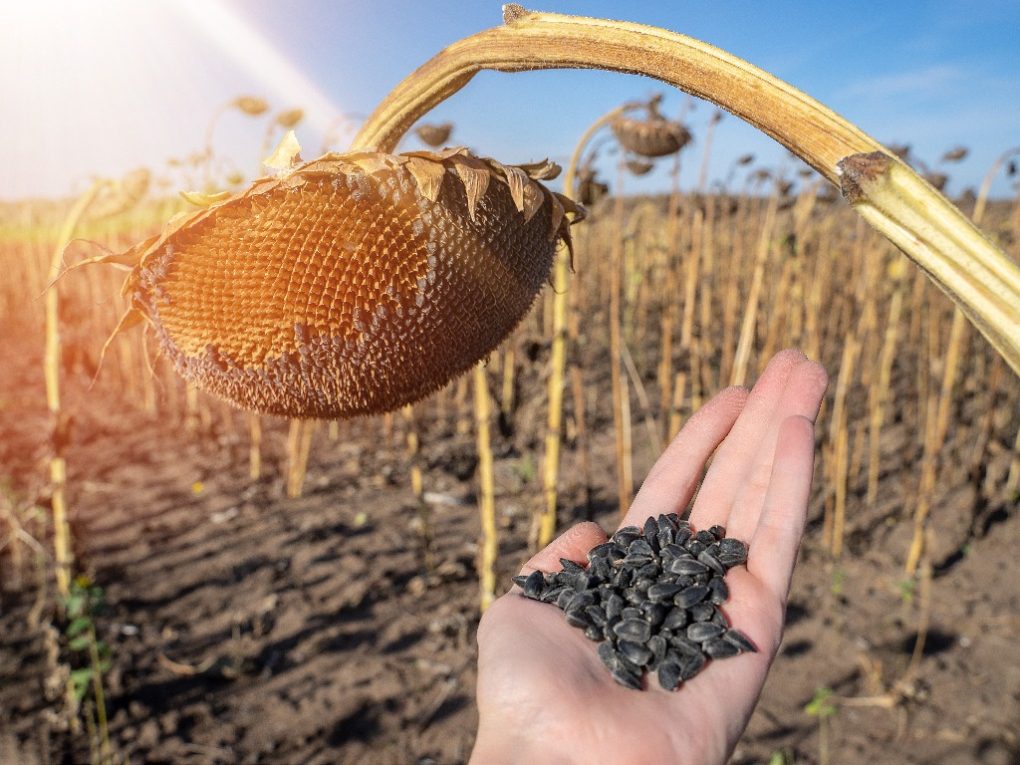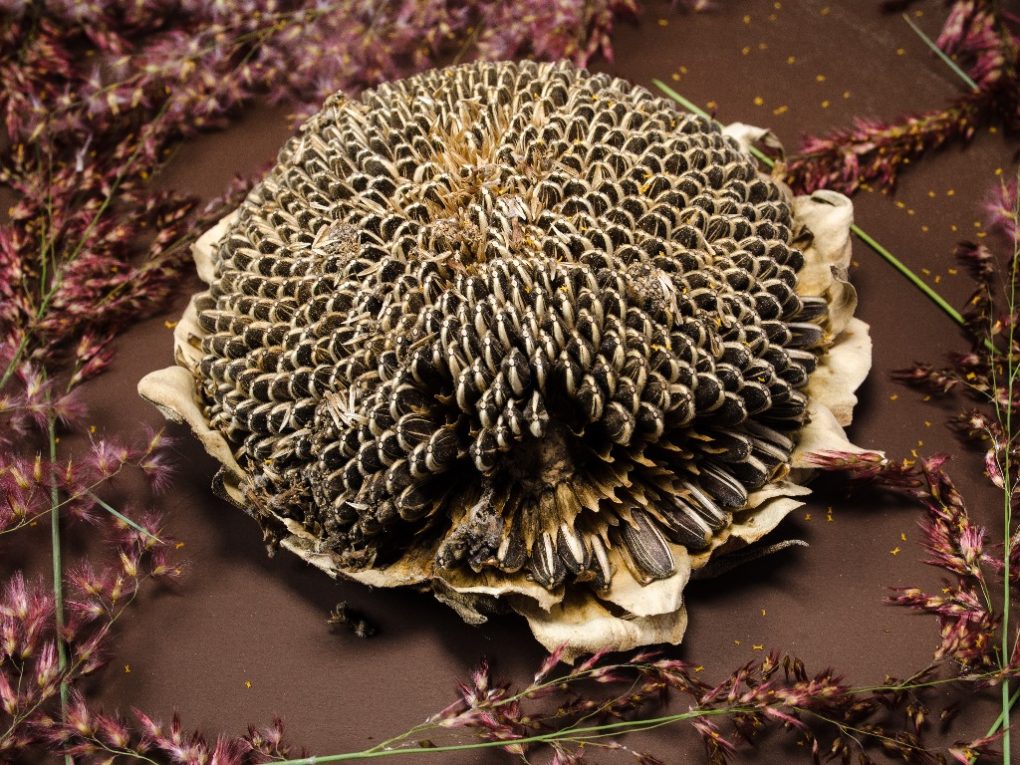Do Sunflowers Reseed Themselves: What You Need to Know About Reseeding of Sunflowers
Yes, many sunflowers are capable of reseeding themselves. Sunflowers are annual plants, which means they complete their life cycle in a single growing season. During this time, they produce seeds that wind, animals, or other means can disperse. If the seeds fall on fertile soil and conditions are right, they may germinate and grow into new sunflower plants.
Table of Contents
Understanding Reseeding of Sunflower

Self-Seeding
Self-seeding is a process by which a plant produces seeds that can germinate and grow into new plants without human intervention. Self-seeding is common among many types of plants, including sunflowers. In the case of sunflowers, self-seeding can occur when the flowers produce mature seeds that fall to the ground and germinate under the right growing conditions.
Sunflowers are capable of self-pollination, which means that the pollen from the same flower or another flower on the same plant can fertilize the ovules and produce seeds. When the flower head has matured and dried out, the seeds can fall to the ground or be dispersed by wind, animals, or other means. If the seeds land on fertile soil and receive enough moisture and sunlight, they can germinate and grow into new sunflower plants.
Self-seeding can be a useful way to propagate plants, as it can help to maintain genetic diversity and ensure that a species continues to grow in a particular location. However, self-seeding can also lead to overgrowth or unwanted growth in some cases, especially if the conditions are favorable for rapid seed production and growth. As a result, gardeners and farmers may need to take steps to manage self-seeding to maintain the desired balance of plant growth and diversity in a particular area.
Natural dispersal
Natural dispersal spreads seeds over a wide area by natural means, such as wind, water, or animals. Natural dispersal is an important way many plants, including sunflowers, can spread and grow in different locations.
Sunflower seeds can be naturally dispersed by wind, carrying them long distances and depositing them in new locations. The shape of sunflower seeds, with their flat, lightweight structure, allows them to be easily carried by the wind. Additionally, sunflowers often produce large numbers of seeds per plant, increasing the likelihood that some will be dispersed by wind and take root in new areas.
Water can also play a role in dispersing sunflower seeds, particularly in areas near bodies of water or where heavy rain or flooding occurs. Seeds may be carried downstream by water and deposited in new locations where they can germinate and grow.
Human-Assisted Dispersal
Human-assisted dispersal is a process by which humans transport sunflower seeds from one location to another, either intentionally or unintentionally. Human-assisted dispersal can occur in several ways, including:
- Harvesting and planting: Humans often harvest sunflower seeds for food or oil and may intentionally plant the seeds in new locations to grow more sunflowers. This can help to maintain genetic diversity and ensure that sunflowers continue to grow in a particular area.
- Gardening: Sunflowers are popular plants that humans may intentionally plant in gardens, parks, or other urban areas. Sunflowers grown in gardens can produce seeds that may be carried by wind or animals to nearby locations, leading to new growth.
- Accidental transportation: Sunflower seeds can also be unintentionally transported by humans through various means, such as on clothing, shoes, or gardening tools. Seeds may also be transported in soil or other materials that are moved from one location to another.
Human-assisted dispersal can positively and negatively affect sunflower populations and ecosystems. For example, intentionally planting and harvesting sunflowers can help support local agriculture and promote biodiversity, while accidental transportation of seeds can lead to invasive growth in new areas.
As a result, it is important for humans to be aware of the potential impacts of their actions on the natural environment and to take steps to minimize negative effects while supporting positive growth and sustainability.
Benefits of Sunflower Reseeding

The benefits of sunflower reseeding can be significant in maintaining plant populations and supporting ecological diversity. Some of the benefits of sunflower reseeding include the following:
- Maintenance of genetic diversity: Sunflower reseeding can help maintain genetic diversity within a population, as plants that can successfully germinate and grow in a particular area are likely to be well-adapted to local conditions.
- Promotion of ecological diversity: Sunflower reseeding can support ecological diversity by providing food and habitat for various insects, birds, and other animals. Pollinators, such as bees and butterflies, often visit sunflowers, which can help support ecosystem biodiversity.
- Soil improvement: Sunflowers have deep taproots that can help to improve soil health and prevent erosion. When sunflowers reseed, they can continue to grow and improve the soil over time, leading to increased fertility and overall ecosystem health.
- Sustainable agriculture: Sunflower reseeding can support sustainable agriculture practices, as it allows for the natural regeneration of plant populations without the need for intensive farming practices or chemical inputs.
Factors Affecting the Rate of Sunflower Reseeding
Climate
Climate plays an important role in the rate of sunflower reseeding. Sunflowers are typically grown in warm and sunny environments and require a certain amount of rainfall and moisture to germinate and grow successfully. Factors such as temperature, rainfall, and humidity can all affect the success of sunflower reseeding.
Sunflowers prefer temperatures between 65 and 80 degrees Fahrenheit (18-27 degrees Celsius) for optimal growth, although they can tolerate temperatures as low as 50 degrees Fahrenheit (10 degrees Celsius). In areas with hot and dry climates, sunflowers may need more water and irrigation to grow.
Sunflowers also require a certain amount of moisture for germination and growth. Sunflowers generally require at least 20 inches (50 cm) of rainfall per year, although some varieties may require more or less depending on their specific needs.
Humidity can also impact the success of sunflower reseeding. High humidity can lead to fungal diseases and other issues that can damage sunflower plants and reduce the likelihood of successful reseeding.
Soil Conditions
Sunflowers prefer well-draining soil that is rich in nutrients and organic matter. Soil fertility, pH, and structure can all affect the rate of sunflower reseeding. Regarding soil fertility, sunflowers require a certain nitrogen, phosphorus, and potassium level to support growth and seed production.
Nitrogen is particularly important for sunflower growth, as it is needed to develop leaves, stems, and flowers. Phosphorus is important for root growth and seed development, while potassium is needed for plant health and disease resistance.
The pH of the soil can also impact the success of sunflower reseeding. Sunflowers prefer a slightly acidic to neutral soil pH between 4.7 and 5.3, according to the International Journal of Agronomy. However, too acidic or alkaline soil can impact nutrient availability and plant growth.
Soil structure can also impact the rate of sunflower reseeding. Sunflowers require well-draining soil that allows for good water infiltration and root development. Compacted or poorly drained soil can lead to issues such as root rot and reduced plant growth.
Competition
Competition from other plants can also affect the rate of sunflower reseeding. For example, sunflowers may compete with other plants for water, nutrients, and light resources. In addition, competing plants can reduce the sunflower reseeding rate and may impact sunflower growth’s success.
In some cases, sunflowers can be planted with other companion plants that help to support healthy growth and reduce competition. For example, planting sunflowers with legumes such as clover or beans can help to fix nitrogen in the soil and support healthy sunflower growth.
However, in other cases, competing plants can negatively impact sunflower growth and reseeding. Invasive species, for example, can quickly take over an area and outcompete sunflowers for resources, leading to reduced growth and seed production.
It is important to plant sunflowers in areas with minimal weed pressure and to regularly weed and maintain the planting area to reduce competition. Proper spacing between sunflower plants can also reduce competition and support healthy growth.
Seed Production

Sunflowers are well known for their ability to produce large quantities of seeds, which are a popular food source for both humans and animals. The rate of sunflower seed production can vary depending on several factors, including the specific variety of sunflower, environmental conditions, and management practices.
One of the most important factors influencing sunflower seed production is the variety of sunflowers. Different varieties have different characteristics and growth habits, including plant size, seed size, and seed production. In addition, some sunflower varieties are bred specifically for high seed production and may be more suitable for commercial seed production.
Environmental conditions can also impact the rate of sunflower seed production. Sunflowers require warm temperatures and moderate rainfall or irrigation to support growth and seed development. Drought, extreme temperatures, or other adverse weather conditions can impact seed production and quality.
Management practices can also play a role in sunflower seed production. Proper planting density, fertilization, and irrigation can all help to support healthy sunflower growth and seed production. In addition, harvesting at the right time is also important for maximizing seed yield and quality.
Seed Dispersal
Sunflowers have several mechanisms for seed dispersal, including wind dispersal, animal dispersal, and self-dispersal.
Wind dispersal is the most common method of sunflower seed dispersal. Mature sunflowers develop large, flat seed heads with small, lightweight seeds. When the seeds are fully mature, the sunflower head dries out, releasing the seeds. The wind can then carry the light seeds long distances, allowing for widespread dispersal.
Animal dispersal is another important method of sunflower seed dispersal. Many animals, including birds, rodents, and insects, are attracted to sunflower seeds, which may help spread them around. Birds are particularly important for sunflower seed dispersal, as they may consume the seeds and then deposit them in new locations through their droppings.
Self-dispersal is also possible in some cases, as sunflowers can produce new plants from self-sown seeds. When sunflower seeds fall to the ground, they may germinate and grow into new plants under the right conditions.
